The Vinehealth Register is a key asset of the wine industry, enabled through the Phylloxera and Grape Industry Act 1995 under which Vinehealth Australia derives its functions and activities. The Register contains planting details of each vineyard of 0.5 hectares of greater in South Australia and therefore can provide powerful insights into the current state of the industry.
On this page we share a range of industry insights from the Vinehealth Register for 2022-23. For more insights, see the 2023 SA Wine Grape Crush Survey and the 2023 Vinehealth Australia Annual Report.
Number of Vineyard Owners in SA
The number of vineyard owners on Vinehealth’s Register in 2022-23 decreased by 18, to 3,234. The number of vineyard owners Registered on Vinehealth’s Register has seen a year-on-year decline over the last 10-year period (2012-13 to 2022-23), with only 2021-22 seeing a marginal increase compared to the prior year.
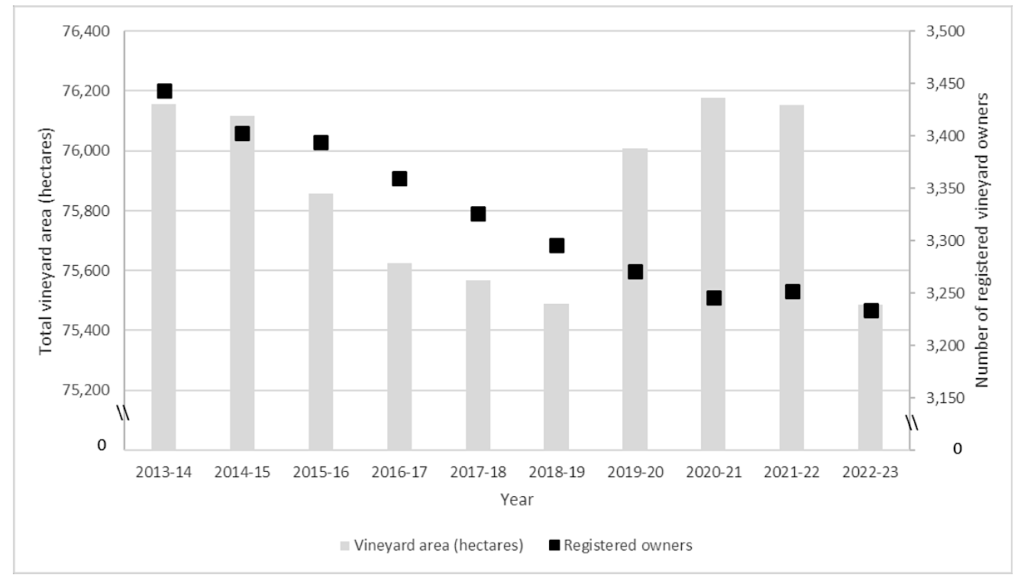
Vineyard sizes in SA
Approximately 60% of South Australia’s registered vineyard owners have vineyards that are less than 10 hectares in size, with only 3% owning vineyards above 100 hectares in size.
105 vineyard owners with greater than 100 hectares account for 45% of the vineyard area in South Australia.
1,904 vineyard owners with less than 10 hectares of vineyard account for 11% of total vineyard plantings in the state.
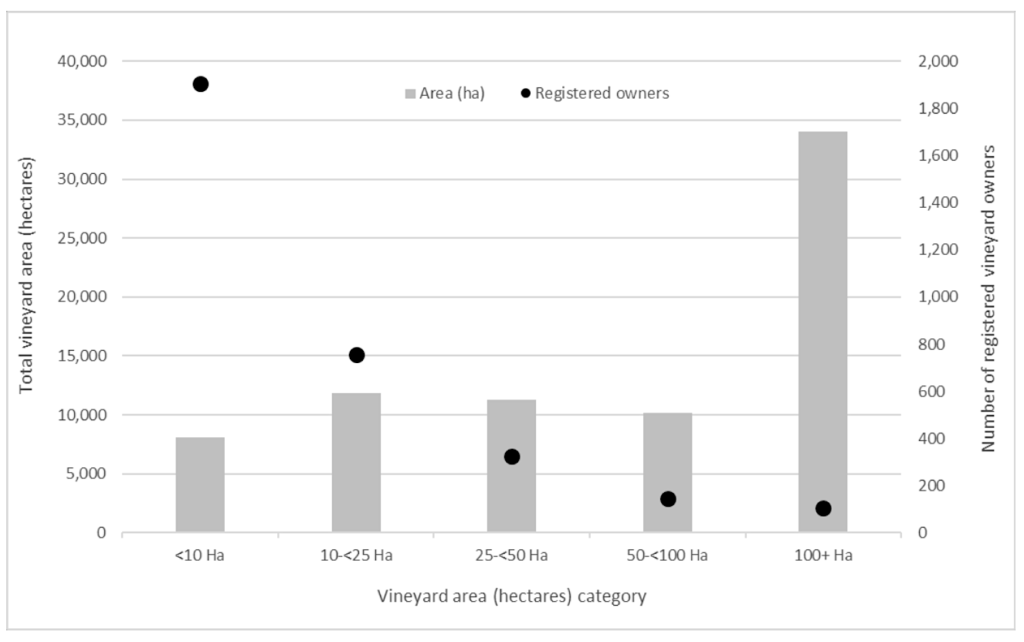
Grape varieties in SA
South Australia’s reliance on two red varieties, Shiraz, and Cabernet Sauvignon, is evident, with these varieties accounting for 61% of the state’s planted area.
The top three varieties – Shiraz, Cabernet Sauvignon and Chardonnay, account for 72% of the total planted vineyard area, the same as the previous two years.
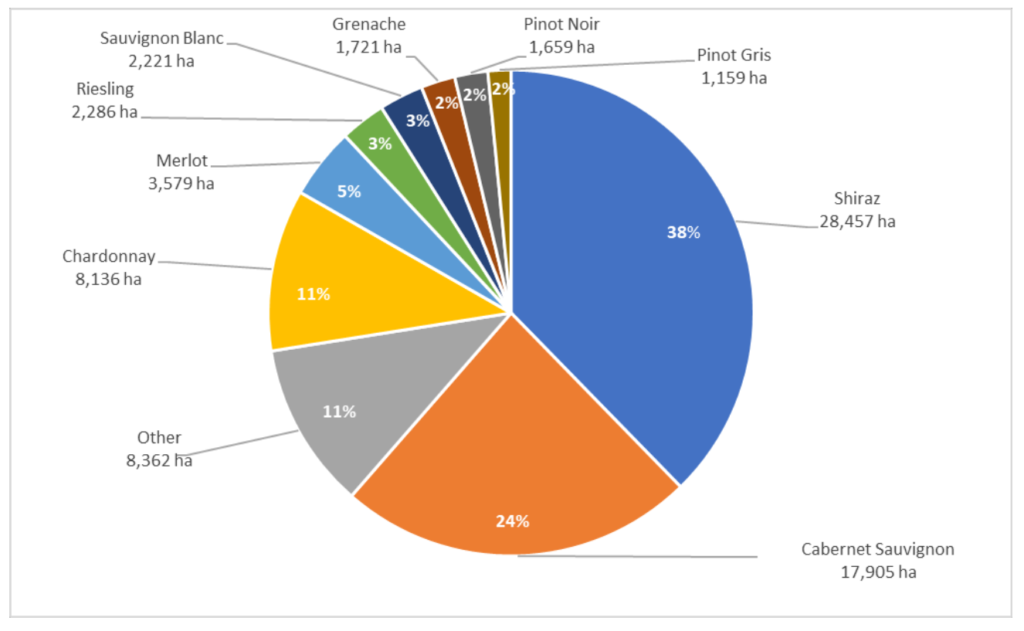
Rootstock plantings in SA
In 2022-23, 72% of area under vine in South Australia was planted to ungrafted vines; those being planted on their own roots. These vines are susceptible to attack by all strains of phylloxera.
This proportion of own rooted vines has been static for at least the past five years and indicates that, from a state level, the use of rootstocks as a farm-gate hygiene practice to reduce the impact of phylloxera is not being widely adopted.
As per previous years, the top four rootstocks planted by area in the state are Ramsey, Paulsen 1103, 101-14 and Ruggeri 140.
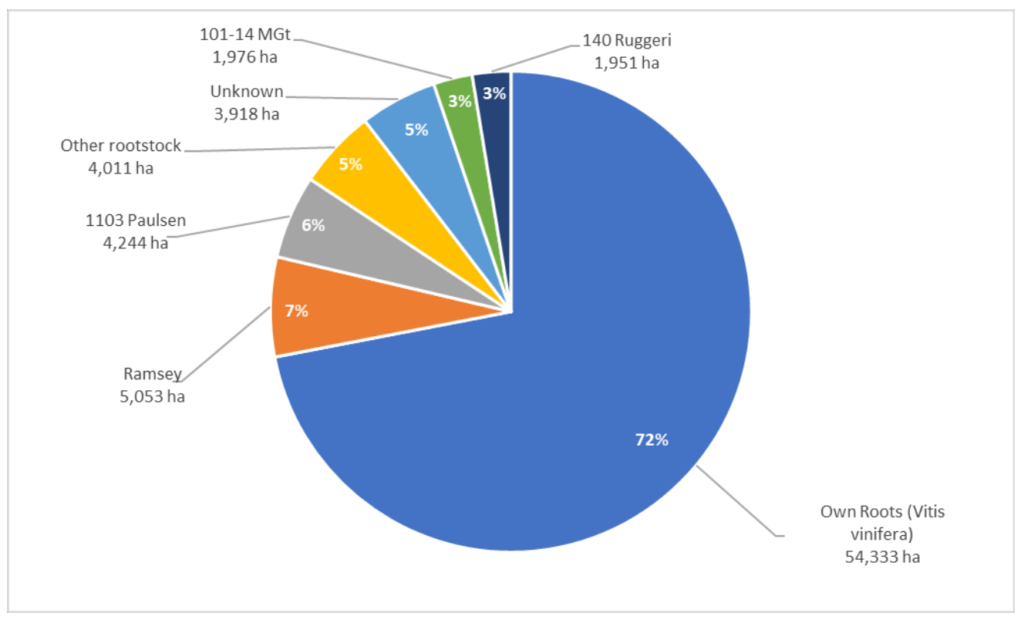
Vine age in SA
South Australia proudly has some of the oldest vineyards in the world.
In 2022-23, 0.46% of the state’s vineyard area (344 hectares) was 100 years of age or older. This represents an increase of 0.12% (90 hectares) over the last five years.
Plantings aged between 35 and less than 70 years of age saw the largest increase in area since 2018-19, representing 0.21%, or 162 hectares.
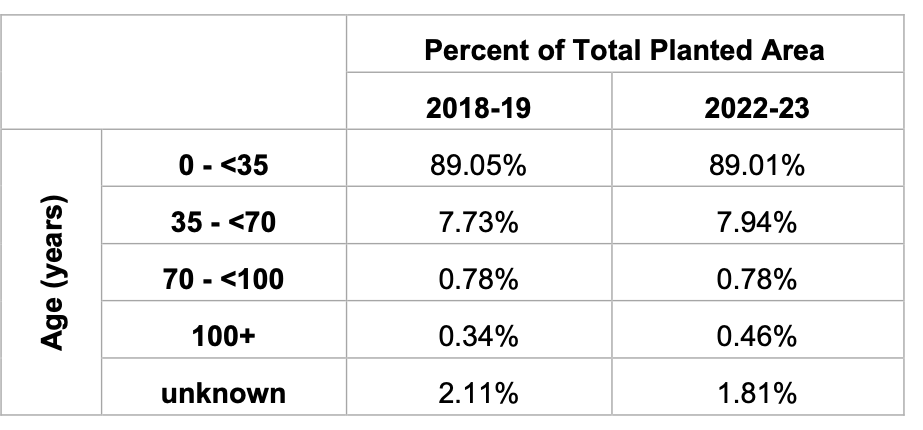
Non-bearing vineyard area in SA
The proportion of plantings of white varieties compared to red varieties increased year-on-year between 2020 to 2022. Whites comprised just 12% of planted area in 2020 and increased to 38% of plantings in 2022, indicative of the changing market landscape.
